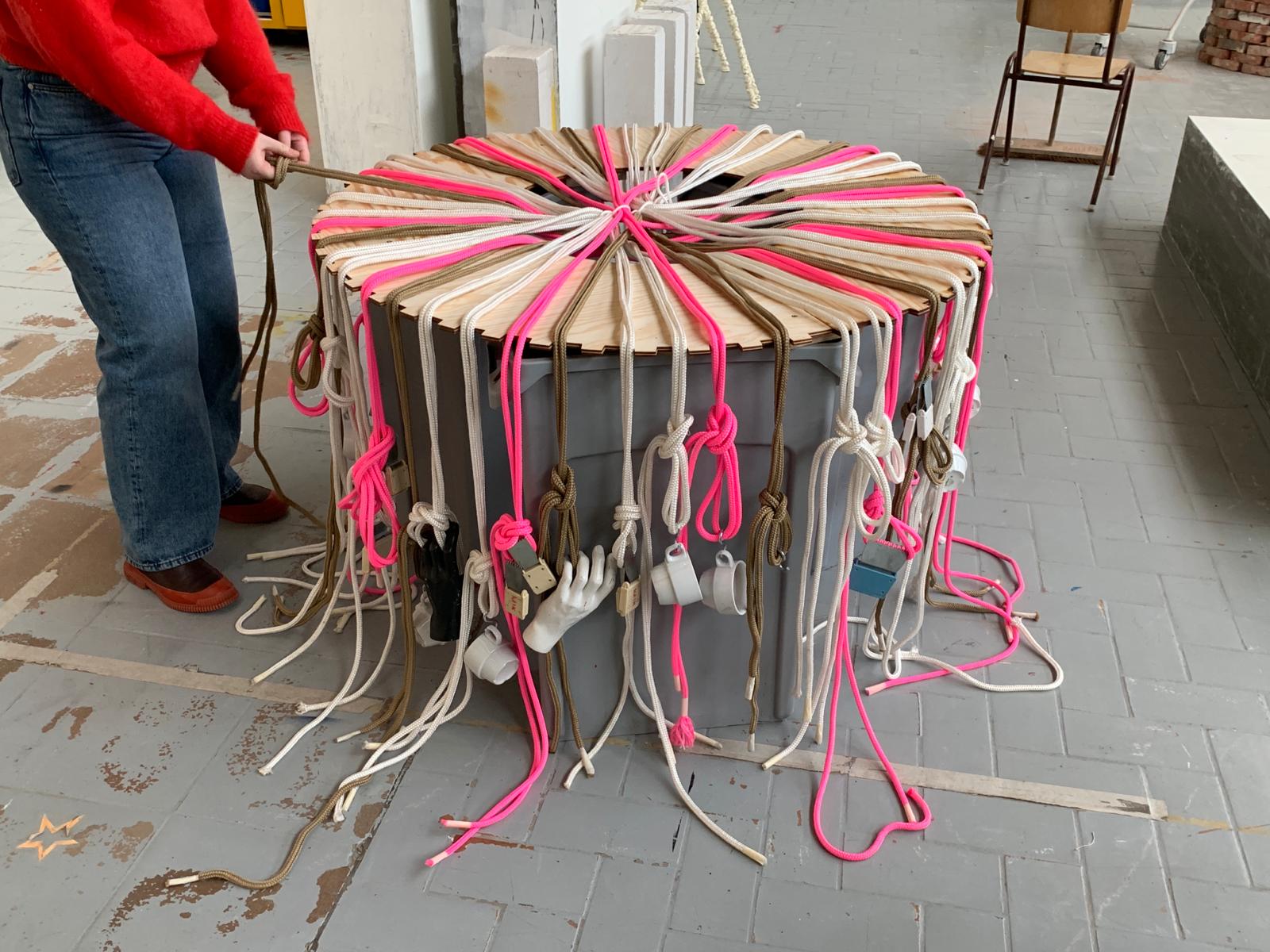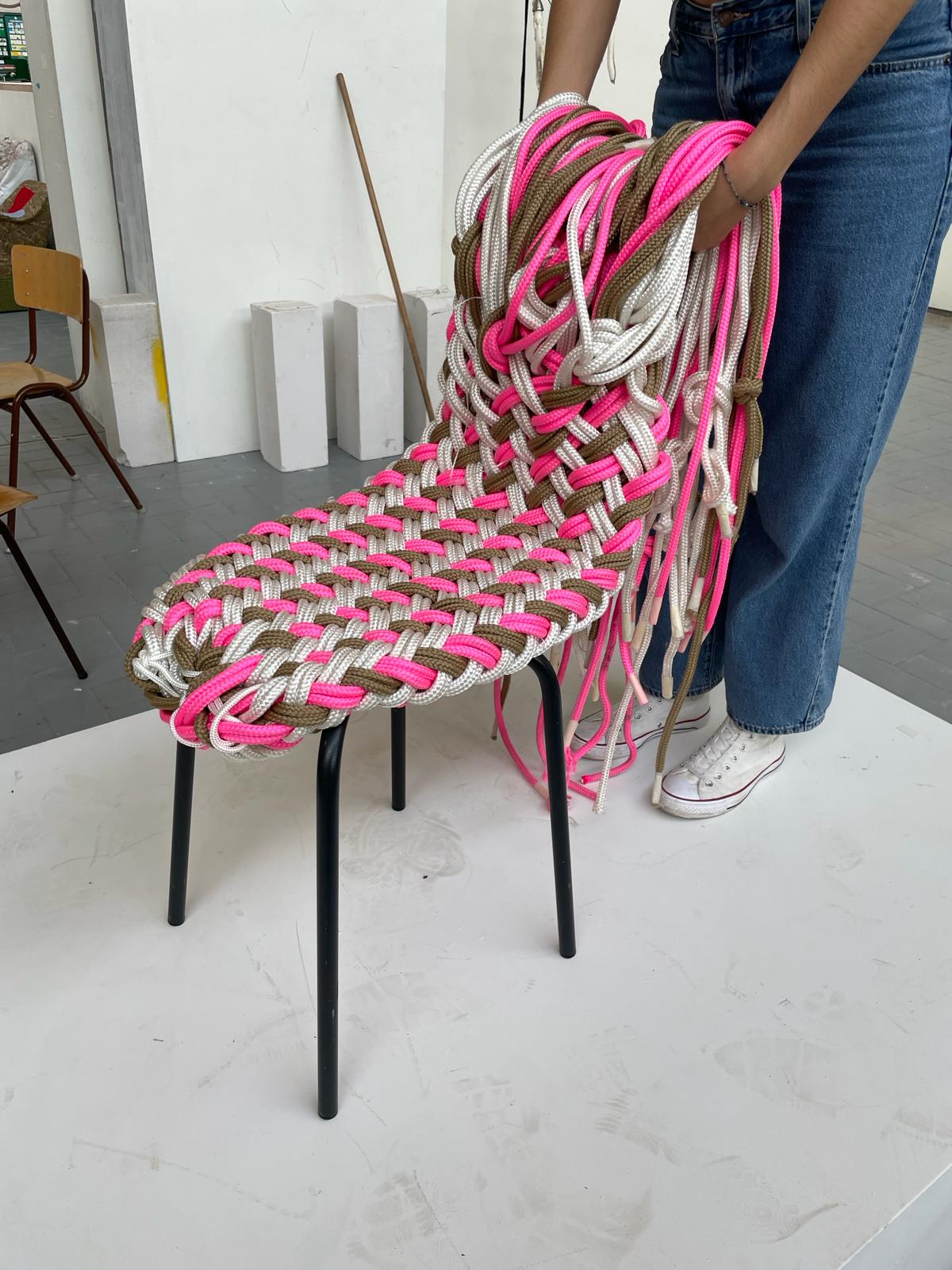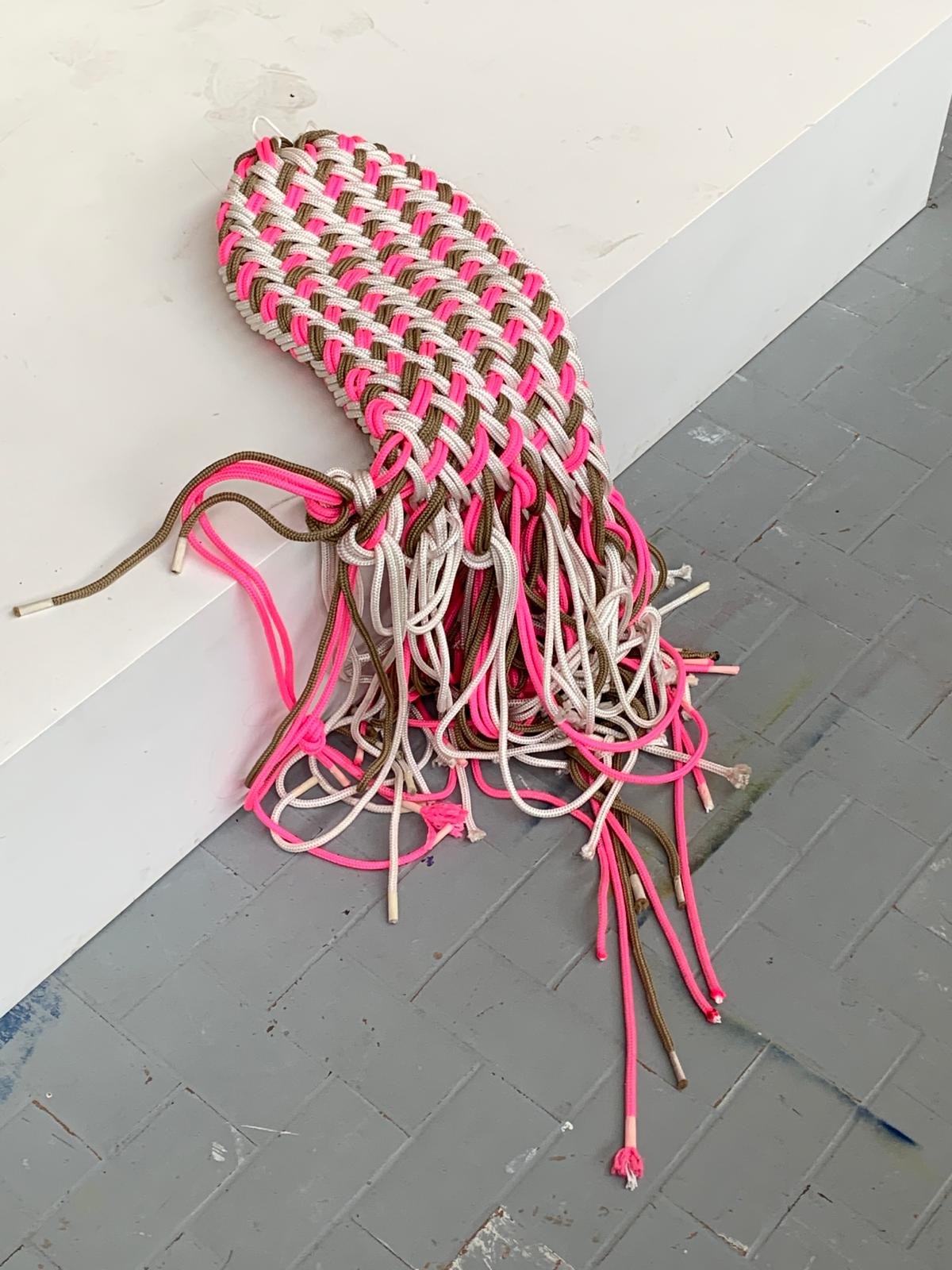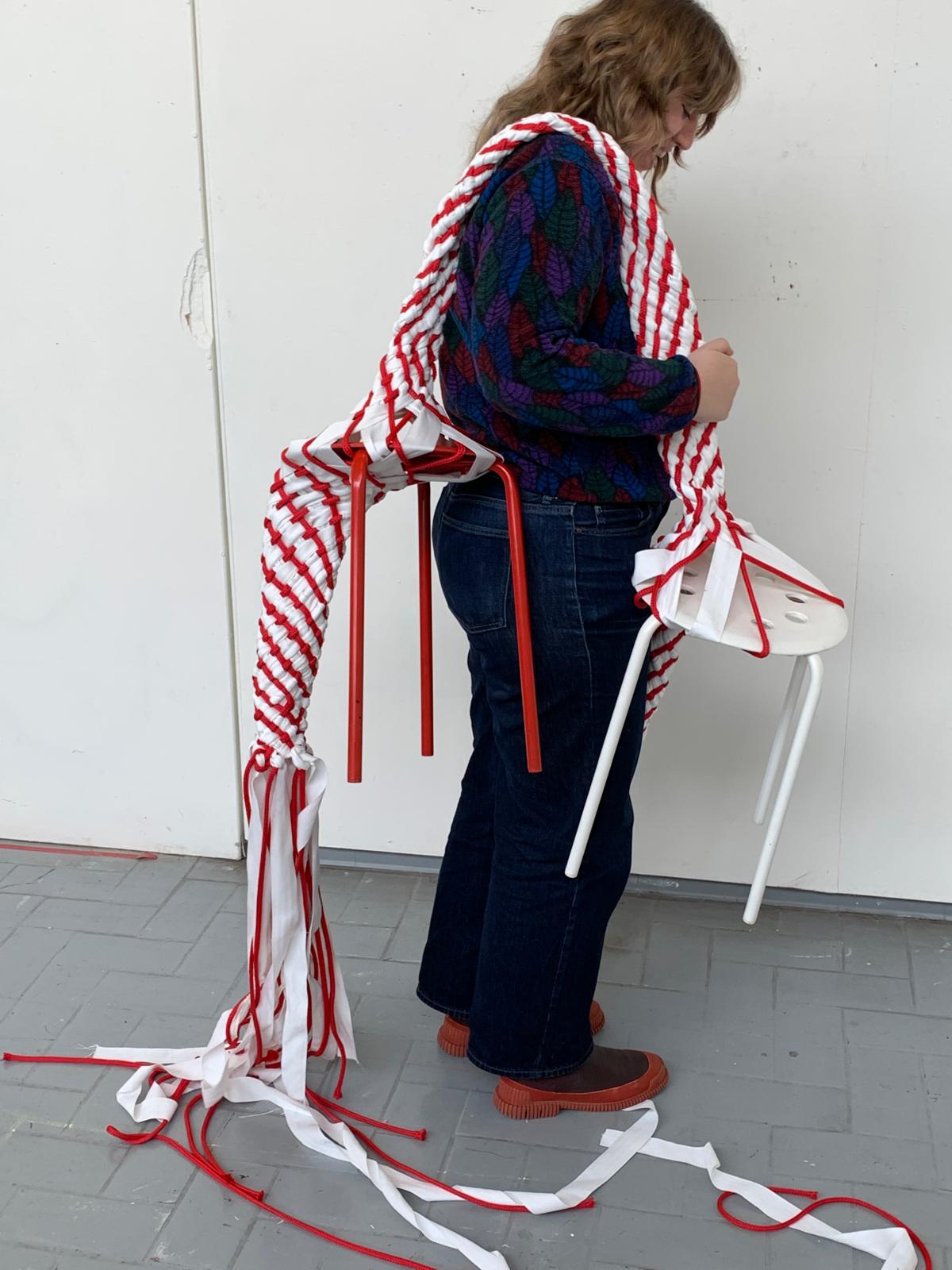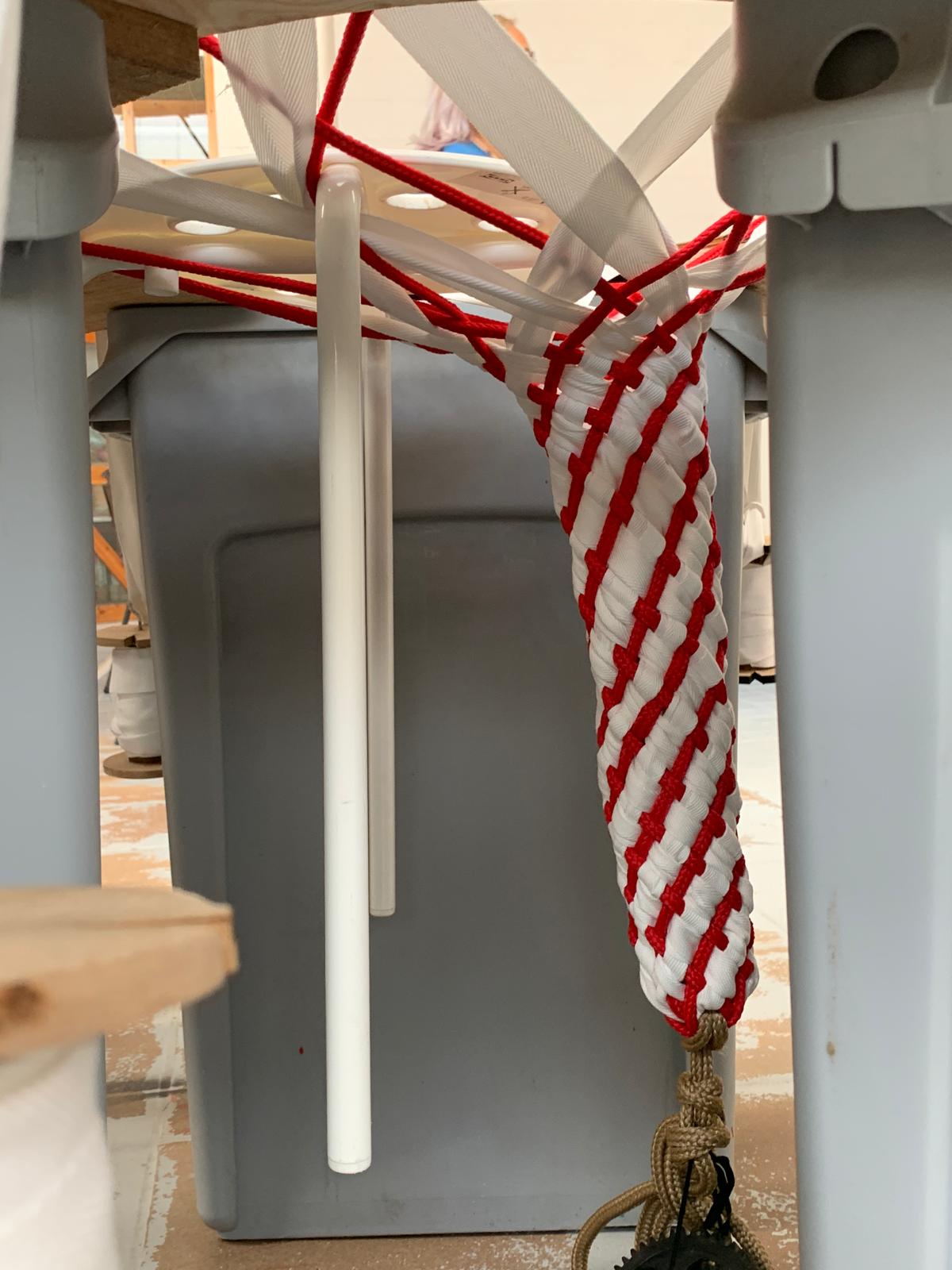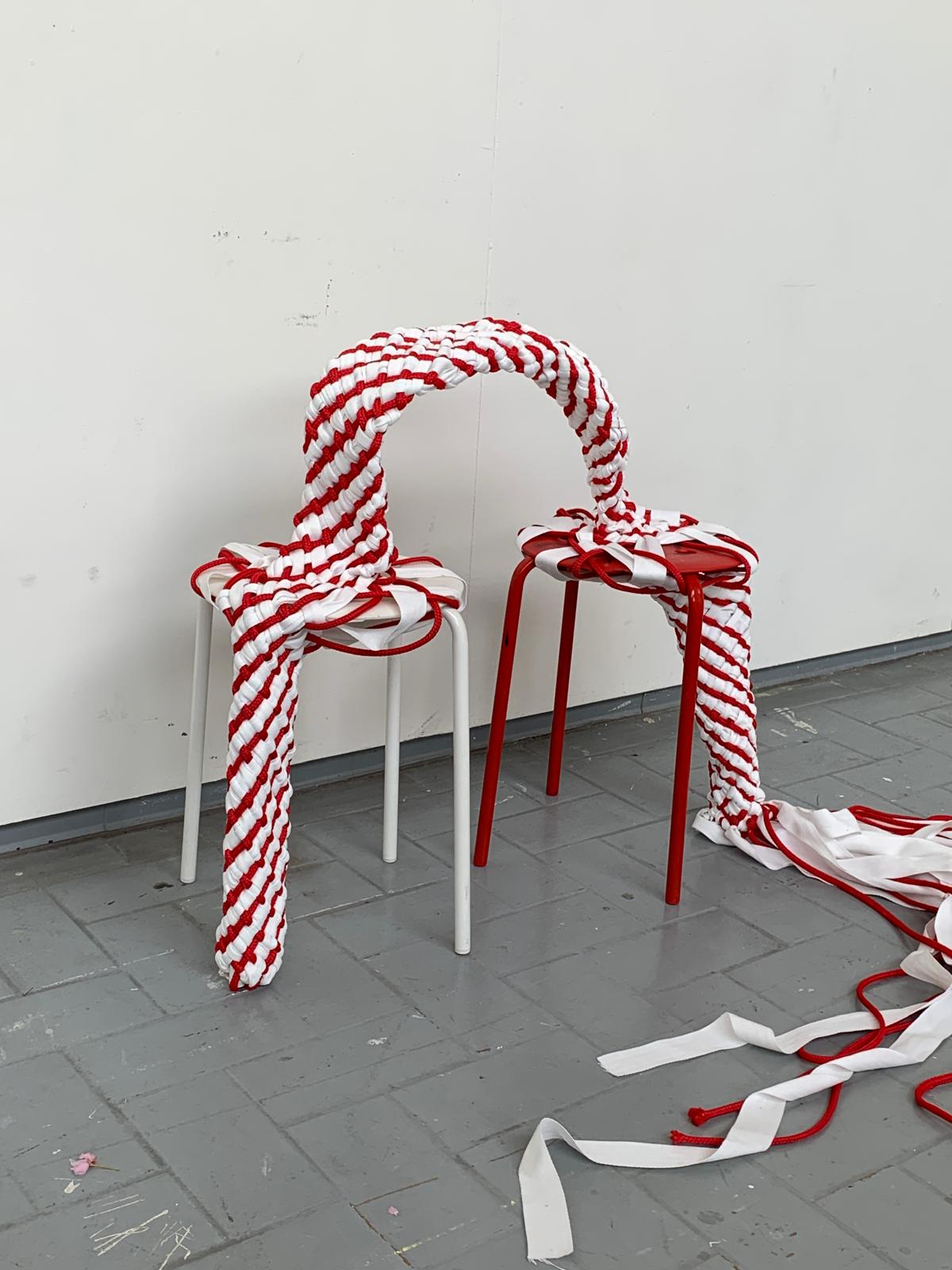The creation of a versatile braiding tool
In response to the challenges of the human sized maypole braider, Soft Connection Lab developed a braiding tool which allows to create healed objects in a more accessible way.


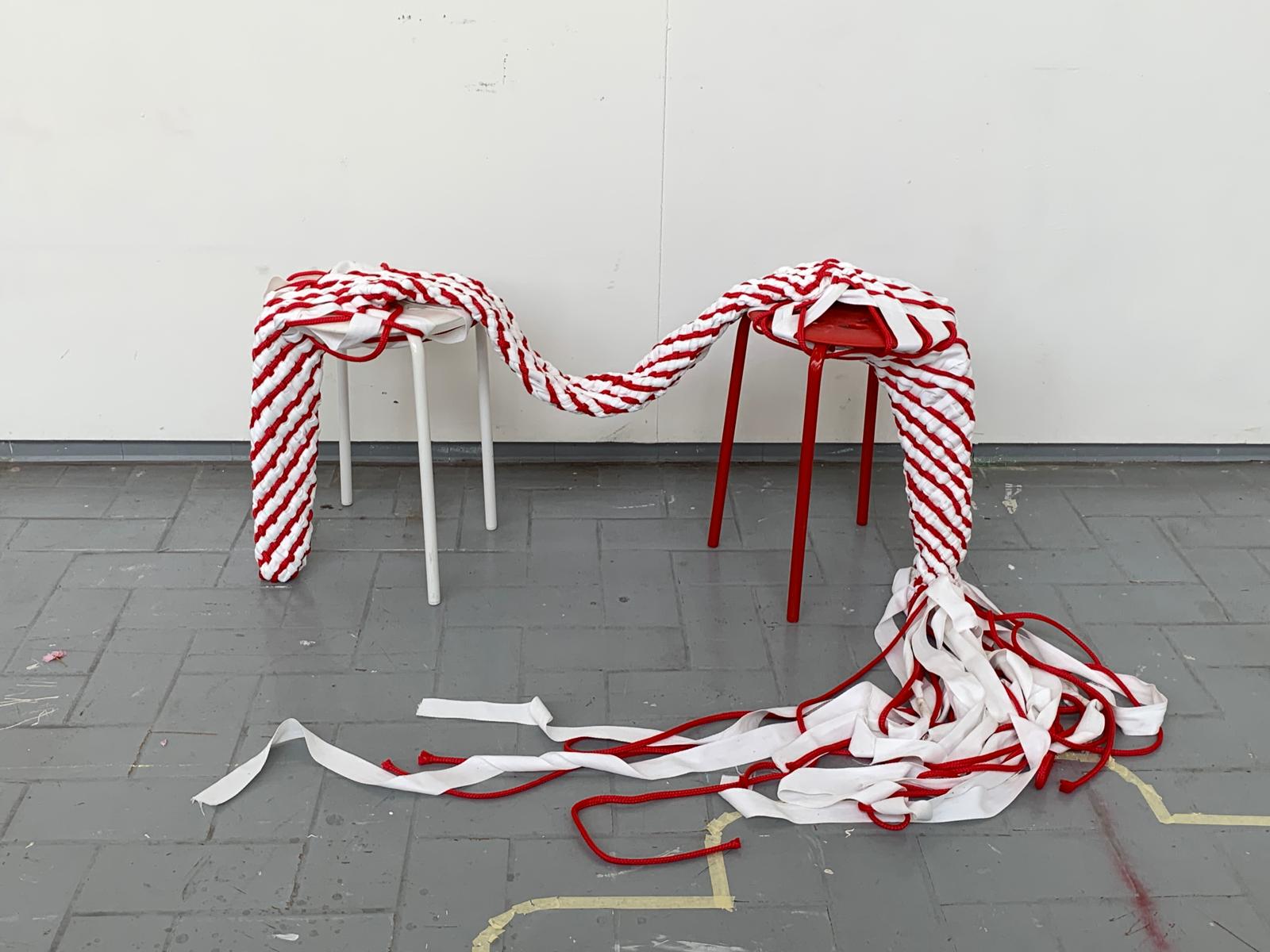
One of the first projects Soft Connection Lab developed, was the human-sized maypole braider. After we’ve tested this machine during the first edition of Design Fest Gent in April 2022, we decided to not invest more time of the research in the development, as the time and effort needed was not going to be too high in relation to what insights the process could bring into the research.
At the same time, we were convinced of the potential of the objects created with the help of the human-sized maypole braider. We asked ourselves how we could achieve a similar upscaled version of a hollow braid, powered by less people, and with a smooth and controlled crossing of the threads. After studying and researching the potential of kumihimo as a technique, including its scaled-up version, and after linking the kumihimo disk to maypole braiding by using tracks, the team came up with a versatile tool to create connected objects without the hassle of the big machine. Besides we also figured out during the research how we could make a hollow braid both in plain and in twill weave.
A versatile braiding tool
Although the first trials with the versatile disk were very rewarding, the rhythm of the making was strongly disturbed by the need of constantly changing the weights on the strands. Therefore, we developed a set of 48 bobbins. Besides, the inner diameter of the disk allows to pass the seat of a stool or chair.
The braid can be set up with 24 or 48 strands, allowing two to four makers to cocreate. Firstly, we experimented with two kind of braids, which we afterwards called ‘calamar seat’ and ‘twin stools’. The calamar seat is made from 48 strands and shows a twill weave pattern. The body-sized sample triggers immediate interaction.
The ‘twin stools’ are made with 24 strands on the same, newly developed tool, using a basket weave pattern, combining red ropes and white flat tapes. This time, the stools were entirely inserted into the braiding tool, thus recovering the stools partly. They got connected through the crossing of the textile ropes and flat tapes. Doing so, these mass-produced stools are being rescued from banality.
